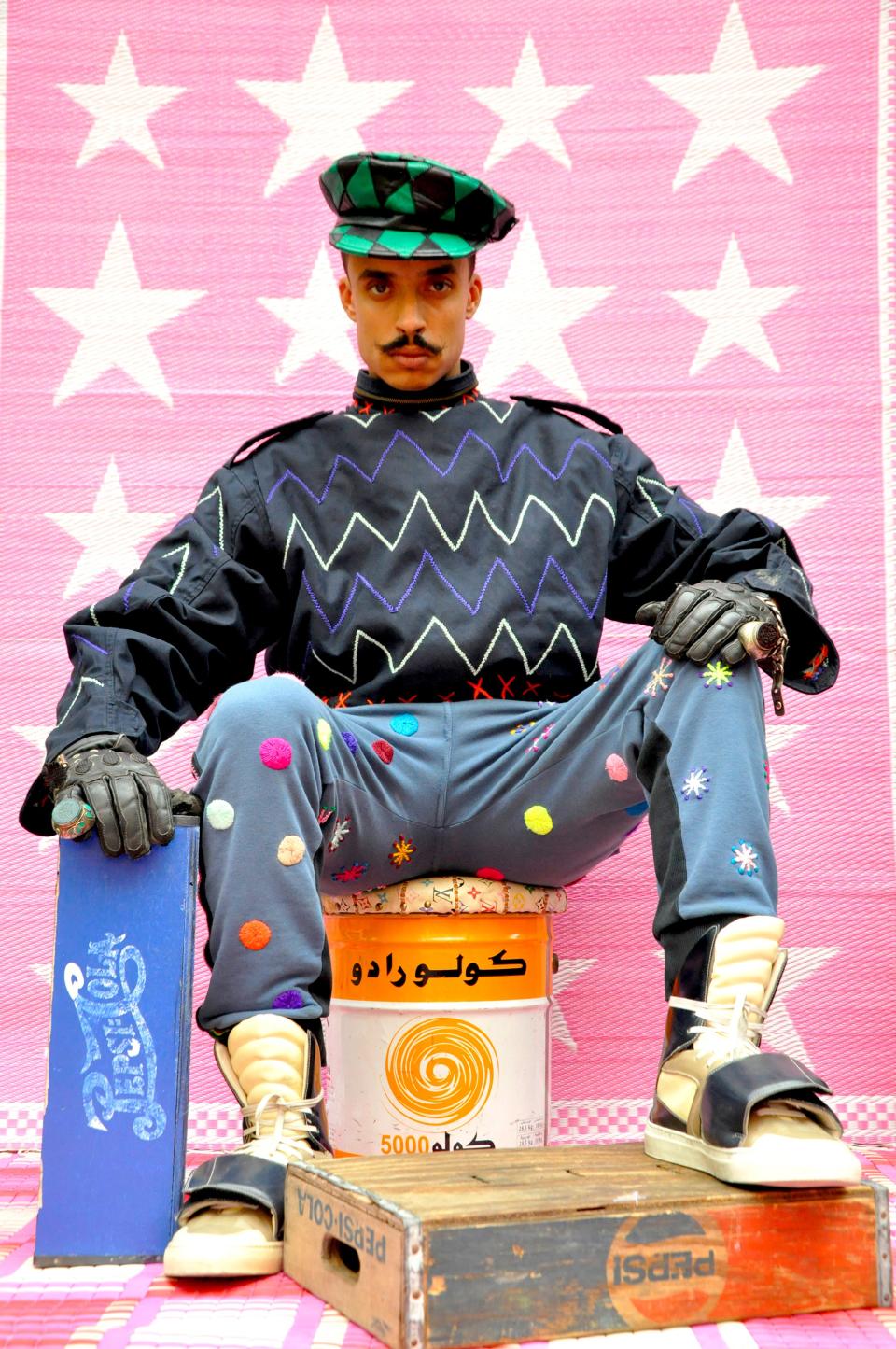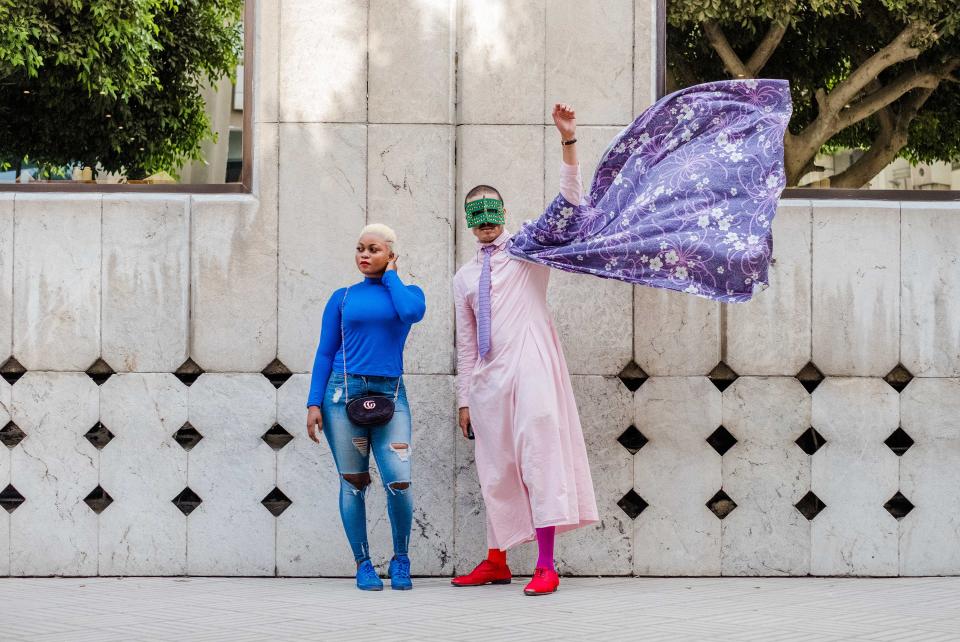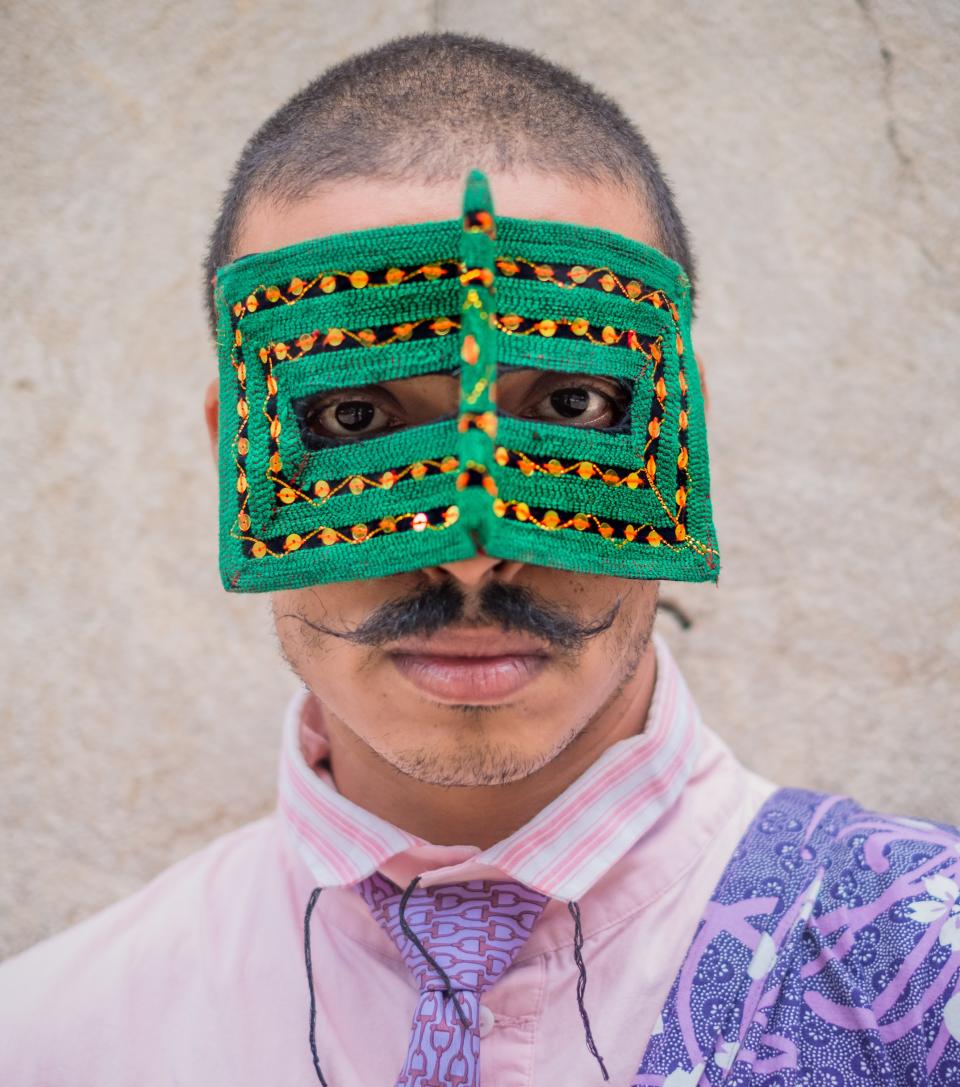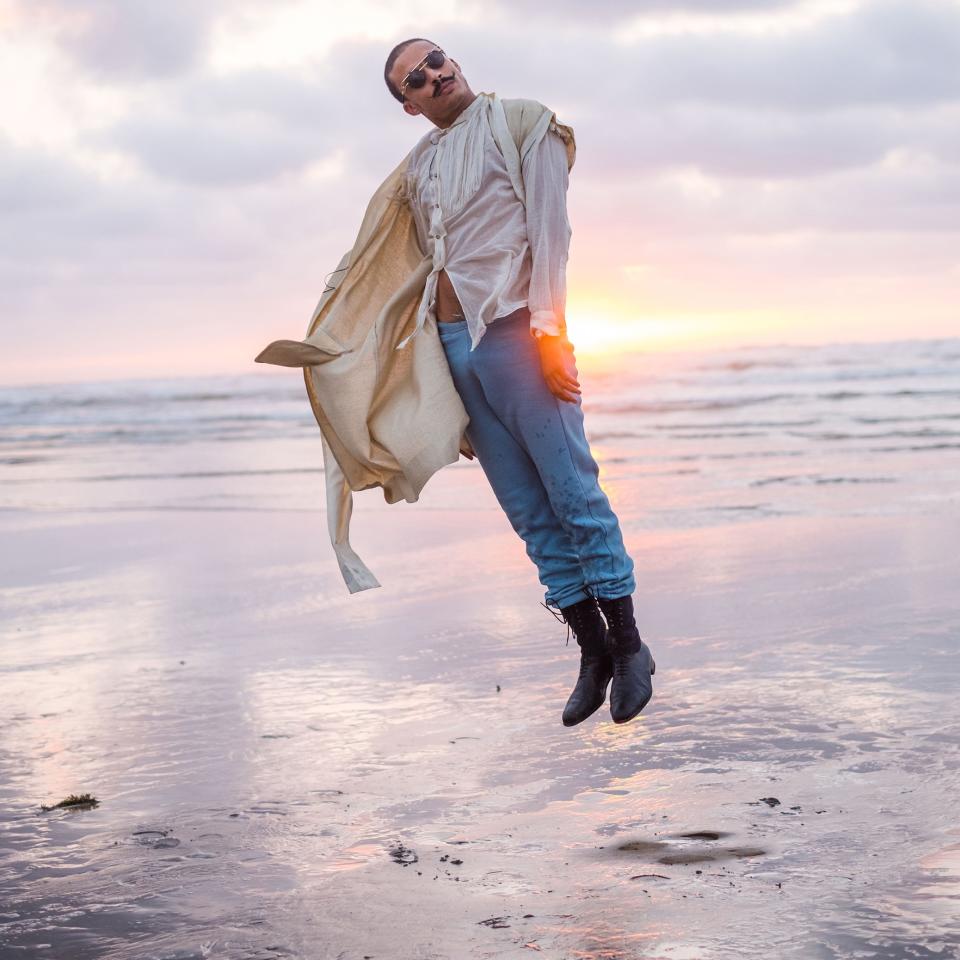Designer and Glamour Boy Amine Bendriouich Puts a Unisex Spin on Dressing à la Marocaine
“I don’t like adjectives,” says fashion designer Amine Bendriouich in response to a request to define his own style. Though if you had to describe his sui generis look, you might use words like colorful, motley, and blithe. On his splashy Instagram page, image after image depicts Bendriouich, handlebar mustache and all, fully made up as the protagonist of his own fanciful Moroccan-set period piece. There are photos of him at the iconic Mamounia Hotel in Marrakech, dressed as colorfully as the geometric tile and fretwork that dance up columns and decorate doors. There’s Bendriouich in a pair of babouche slippers at the airport, or his own interpretation of harem pants–they’re pink! Much of what he wears and designs disregards gender, but it might be considered accidentally unisex. He admits his clothes-for-all design approach is fueled by a desire to want to wear everything he makes—skirts included—rather than marketing.

Born in Casablanca (though he now lives and designs out of Marrakech), Bendriouich first began designing clothes to get girls. “I was broke as a kid and couldn’t invite girls out,” he says. To impress them, he would gift them sketches of custom collections: “I would look at their physique, hair color, the types of music they listened to, and design their clothes.” Soon after, Bendriouich started making his own clothes, partly to continue to impress girls but mostly because his wardrobe (then furnished by his parents) was limited. “My parents would buy me clothes to start the school year and the religious vest to wear for Ramadan; I wasn’t able to choose,” he says.

Since launching his line in 2012, Bendriouich has become part of a new wave of Moroccan thinkers and creators, running in the same circle as the fine artist and photographer Hassan Hajjaj—who has snapped his photo on more than one occasion. (Though the designer's onetime spell in Berlin—with its anything-goes way of life—was highly impactful, and he jokingly calls himself a Berberliner.) Bendriouich's Moroccan roots run deep, though, and that makes his gender-inclusive approach to fashion that much more remarkable: it has certainly raised the eyebrows of traditionalists, his mother included.

But as Bendriouich explains, there is historical precedent for unisex dressing. “There’s this story in the Sunnah [a book recording the life of the prophet Muhammad] about a man and wife so poor they only owned one piece of cloth. If he had to go out to the mosque, his wife would stay home unclothed until he came back. She would then wear the same cloth to the mosque upon his return,” he says. “The Prophet wasn't shocked by this man wearing the same piece of cloth as his wife; he was saddened, though, that they were in such a situation of need.” He continues, “What they were wearing didn't matter. So why does it matter today?”
While Bendriouich’s eccentric style certainly isn’t for everyone, it’s good to know that it’s available for everyone. “I create for the world," he says, “for free-spirited people who see the world as one.”


